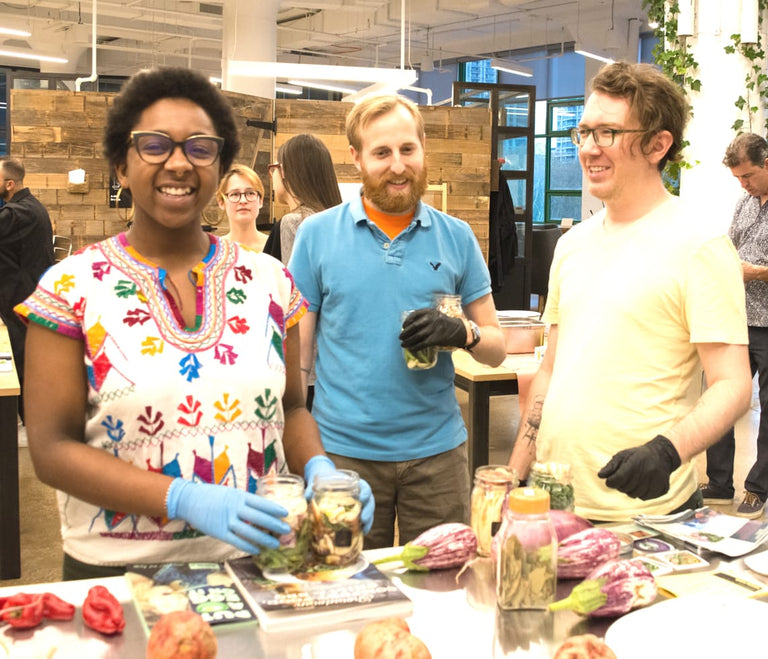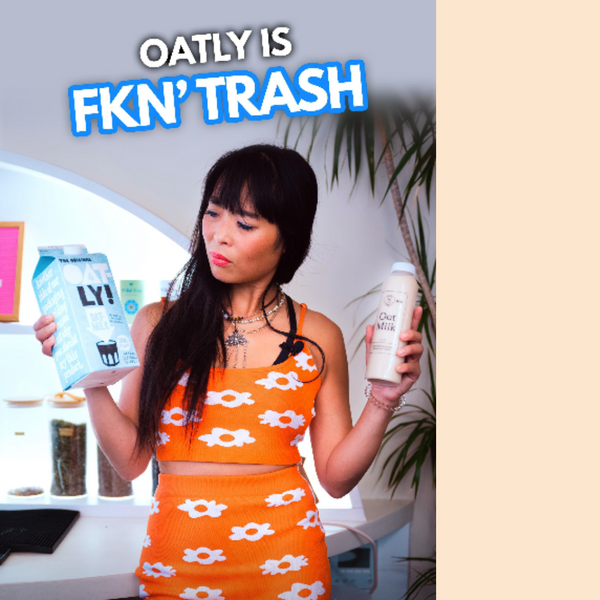Local Roots’ Food Geek Glossary
One thing is for sure: it’s no simple task to be an informed consumer in 2020. A growing awareness and understanding of where our food (and products) come from is kind of like opening a pandora’s box…there is a high chance that many of the products that we consume have hidden trade-offs. So where do we draw the line?
At Local Roots, we think it’s important to be curious, informed, and mindful consumers. We do everything in our power to heal our broken food system, and we understand the many hurdles that come in the way of getting there. We value integrity, transparency, and trust from every partner that we work with. We also want to share the knowledge that we’ve gained over the years, so we’re giving you the opportunity to geek out with us about everything from sneaky food labels to farming techniques.
It would be an understatement to admit that understanding food terms can be quite the challenge, which is why we’ve put together this exhaustive list of all the definable food terms we could think of. Keep in mind that we’ll be updating this list as time goes on, so be sure to check in from time to time for the expanded versions to follow!
All Natural: A vague and unregulated label that is meant to signify foods which are closest to their natural state, although the FDA offers no specific definition for the term. Foods that contain hormones, GMOs, gluten, high fructose corn syrup, and other questionably “natural” ingredients may still be labeled “all-natural.” That means animals raised with hormones and antibiotics can still fall under the “natural” category, as can Cheetos, lemon-flavored Oreos, and Skippy peanut butter.
Cage-free: A USDA-regulated label that means that hens don’t live in cages. It doesn’t indicate how much space they have, or whether or not they spend time outdoors. (Peep our egg-sposé on egg labels here and talk with @lucybiggers here)
Farm Fresh: An unregulated term often used in reference to eggs. Experts claim the term is probably meant to conjure up a favorable image in the consumer's mind, but has no substance whatsoever.
Free-range: Regulated by the USDA, but only in relation to chickens. Free-range chickens must be “allowed access to the outside.” This does not guarantee that a hen ever sets foot outside. In practice, most chickens stay close to water and feed, which is usually located within the chicken house. Because rules don’t apply to other animals, or even to eggs, the label is legally meaningless – producers can use the label in any way they want.
Heritage Breed: A breed of pigs that is raised for longer than conventional breeds, which allows them to develop maximal tenderness and flavor. Typically, these hogs are purebred Heritage that exhibit omnivorous behavior, and have access to open pastures and ranges where they can forage for themselves. Of course, these pigs are also free from antibiotics and any other growth promoters and hormones that are sometimes commonly found in conventional pork.
Hyper local: At Local Roots, we source from producers within 2 hours of NYC in order to cut down on unnecessary gas miles. We build long lasting relationships with our local farmers because we believe building a healthy local food ecosystem centers around trust at both ends of the supply chain. Less travel time means more nutrients retained in produce, not to mention, it allows our grocery lists to change with the seasons, leading us to eat more diverse foods (and nutrients). Plus, eating hyper-local gives us the chance to have a close connection with farmers, which means we can verify their growing practices and ethical standards.
Local: There are no formal or officially regulated definitions of “local.” The clearest definition in terms of spatial distance can be found in the 2008 Farm Bill, which allows products that travel less than 400 miles (🤯) from their origin or were produced in the same state to be called “locally or regionally produced.” (FYI – there is no such thing as local citrus grown in the Northeast.)
Multi-Paddock Grazing: A more effective form of rotational grazing in which one paddock is grazed at a time while other paddocks recover and livestock numbers are adjusted as needed to match available forage as conditions change. It is based on reading the conditions of the land and forage, assessing the needs of the livestock, and planning the grazing appropriately. Research shows that some ranches practicing multi-paddock grazing principles have been able to sequester an additional 12 tons of carbon per acre over a ten year period when compared with more conventional grazing practices.
Overwintering: The practice of leaving vegetables in the ground over the winter to harvest in the spring. Root vegetables like carrots, beets, turnips, and radishes are great for overwintering. Cold temperatures initiate a process known as chill-sweetening, in which the plants convert starches to sugar and yield a crisp, candy-like vegetable come spring.
Regenerative agriculture: An approach to farming and grazing practices that reverses climate change by rebuilding soil’s organic matter and restoring degraded soil biodiversity, resulting in carbon sequestration and improving the water cycle. Regenerative farming boosts soil health through a variety of techniques including permaculture design, livestock integration, cover cropping, minimal to no tillage, and polyculture.
In recent years, regenerative agriculture has been gaining more mainstream attention as a coalition led by the Rodale Institute, Patagonia, and Dr. Bronner’s joined forces to form the Regenerative Organic Alliance. Together, they launched the Regenerative Organic Certification (ROC), which requires producers to meet the requirements for animal welfare and social fairness in addition to their USDA Organic certification. The ROC has garnered skepticism amongst those who believe that the label adds more confusion to a marketplace where consumers are already overwhelmed by an abundance of third-party labels.
Pasture-raised: A label that signifies an animal is getting a significant portion of its nutrition from grass grown in a pasture. Unlike “grass-fed,” the term signifies where the animal eats. Pasture-raised livestock are bred to do exhibit natural behaviors on pasture, unlike their industrial counterparts that are bred for inhumane, contained environments. Cattle can roam and graze; chickens can scratch and peck; hogs can root and wallow on open pasture. Poultry that is labeled pasture-raised and certified humane must be given ample space to roam outdoors and access to a barn for cover. Eggs that come from pasture-raised hens are higher in vitamin A, E and omega-3s, as well as lower in cholesterol and saturated fat.
While this term is not regulated by the USDA, this is our preferred label because it means humane living conditions, more flavorful products, and a more natural way of living and foraging for the animal.
Root cellaring: A way of using the earth's naturally cool, stable temperature to store perishable fruits and vegetables. If conditions are kept between 32 and 40 degrees Fahrenheit with 95-percent humidity, vegetables can be kept for months – allowing farmers to sell their vegetables throughout the year, providing them a source of steady income, and allowing them to feed their customers nutrient-rich foods through the winter.
Rather have a taste first?
Local Roots Experiences are fun, pop-up events where we bring the farm to you!

Become a Harvest Club Pick Up Location
Are you a NY based cafe, bar, or neighborhood business? Become a Harvest Club pick up location and have community members come to your establishment each week to pick up their Local Roots harvest.
Top







